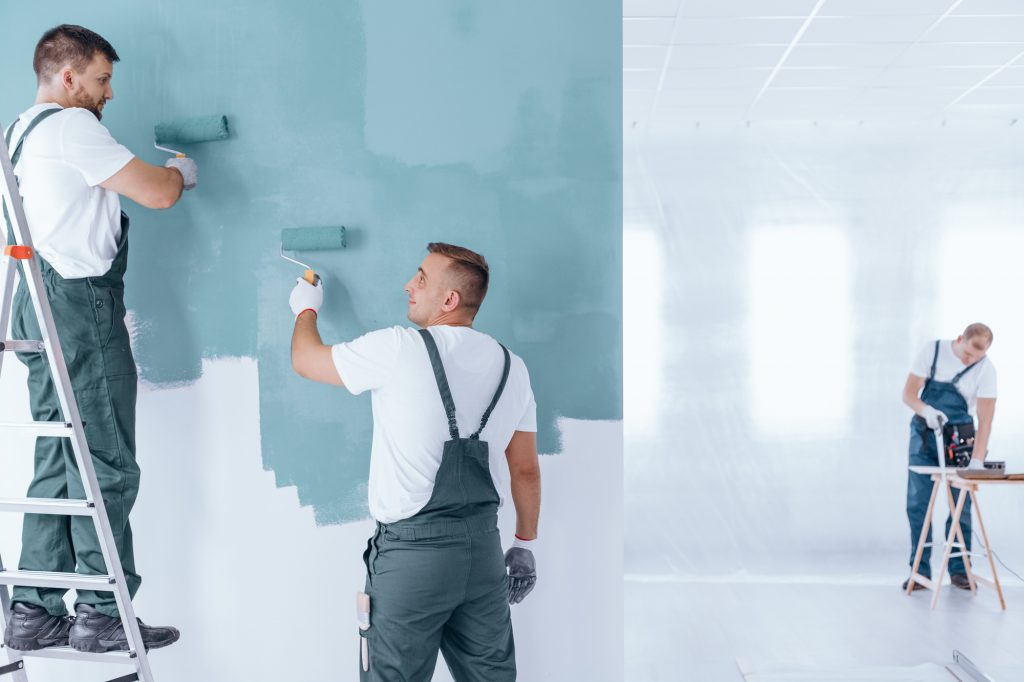According to experts, architectural paint in the US will become a $15 billion industry by 2025. This should already give you an idea as to how expensive paint jobs can be.
However, if you plan to hire a painter, expect your costs to be higher than if you complete the job yourself. After all, hiring a painter means you’ll pay not only for paint but professional services, too.
So, how much can you then expect to pay a licensed professional painter? What goes into the fees they charge, anyway? Most importantly, what can you do to lower your expected costs?
We’ll answer all those burning questions in this guide, so be sure to read on!
How Much Does a Painter Cost?
According to the US Bureau of Labor Statistics, the median hourly salary of painters in May 2020 was $20.25. Median here refers to the midpoint wage, which means half of all painters in the US charged more than $20.25 per hour. Conversely, half of all professionals painters charged less than that.
Still, you can use that figure to get a rough estimate of how much it would cost you to hire a residential painter.
What Factors Influence How Much a Residential Painter Charges?
The cost of labor in your area is the primary factor that drives painter costs. For example, in places with a higher cost of living, the labor cost is usually higher. Otherwise, workers won’t afford to live in that area if they don’t charge an appropriate amount.
Thus, if you live in a metropolitan area, you can expect to pay more for labor. Of course, the bigger the size of the project, the higher your overall costs would be, too.
The labor cost is just one factor, though; here are a few others that can drive your painting expenditures.
Exterior vs. Interior Painting Job
Hiring a painter for an exterior paint job will likely cost you more because of the paint itself.
Exterior paints cost more because of certain additives that aren’t in interior coats. Additives in exterior paints help make them more resistant to outdoor elements.
For example, exterior paints may feature polyethylene additives to help them repel dirt. These extra ingredients also help make the cured coat resist abrasives better.
Another example is polyester, which has a high resistance rating against abrasion. This additive also boosts the paint’s ability to withstand alcohol and cleaning agents.
Many exterior paints also boast water resistance, which is a must if you live in a rainy area. That’s because rain, especially acid rain, can degrade building components. So, if you use non-exterior paint on your exterior walls, you can expect it to develop damages sooner.
Another additive that can make exterior paint cost more is a UV protector. It can take the form of a UV blocker or a UV stabilizer. In either case, the added material helps make the sun-exposed paint last longer.
The Condition of the Surface Requiring a Paint Job
If the paint job involves brand-new walls, then your chosen home painter may charge you less. That’s because new walls usually require less surface preparation than weathered surfaces.
Older surfaces, on the other hand, typically need more surface preparation. For example, if the existing paint has severe damage, the painter must remove this layer first. As a result, the professional home painter would need more time to finish the job; thus, you’ll pay more.
Speaking of paint removal, you may need to hire a painter with a special license to remove lead paint. This depends on your state, but many require painters to have a lead-safe license to deal with lead paint.
Your costs can also go up if the surfaces for painting require some repairs first. These include sealing or patching holes, smoothening dents, or filling crevices.
Surfaces caked with dust, salts, and even molds need cleaning too. In such cases, the painters will likely use blasting equipment to get rid of the contaminants. They need to do this as failure to prep the surface properly can lead to the new paint failing sooner.
Is There Anything You Can Do Trim Painting Costs?
Yes.
For starters, make sure you obtain quotes from several painting companies near you. This way, you can negotiate rates and secure a more affordable final price. However, to ensure that the price won’t change, have the contractors put it into writing.
You can also give the surfaces an initial cleaning job by washing them down. This will help reduce the prep work that the pro painters would need to do. As a result, the experts will have less surface prep to do, so they’ll have fewer hours to charge you.
It’s also a wise move to remove as many obstructions as you can in the job area. For instance, if you’re having your interior walls done, you can move some of your stuff to another room. This way, the pro painters will spend less time laying out protective plastic sheets.
Investing in high-quality paints can also help you reduce your costs in the long run. One reason is that they last longer than bottom-dollar paint, which can peel off in just a few years. What’s more, the folks at Brush Masters XP say that many top-notch paints come with a lifetime warranty.
Hire a Painter to Freshen up Your Home
A painting project will no doubt cost more if you hire a painter. However, you should also look at the risks of DIY paint jobs, such as accidents like slips, trips, and falls. Note that one in five fall accidents are so severe they cause broken bones.
Besides, a DIY paint job gone wrong will likely cost you more. So, it makes more sense to hire a pro than deal with the aftermath of paint disasters.
Looking for more home improvement ideas and guides? Feel free to browse our recent blog posts then!

